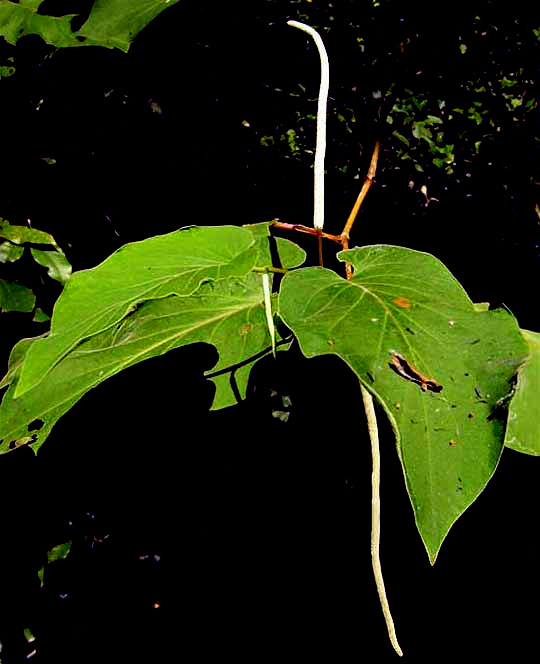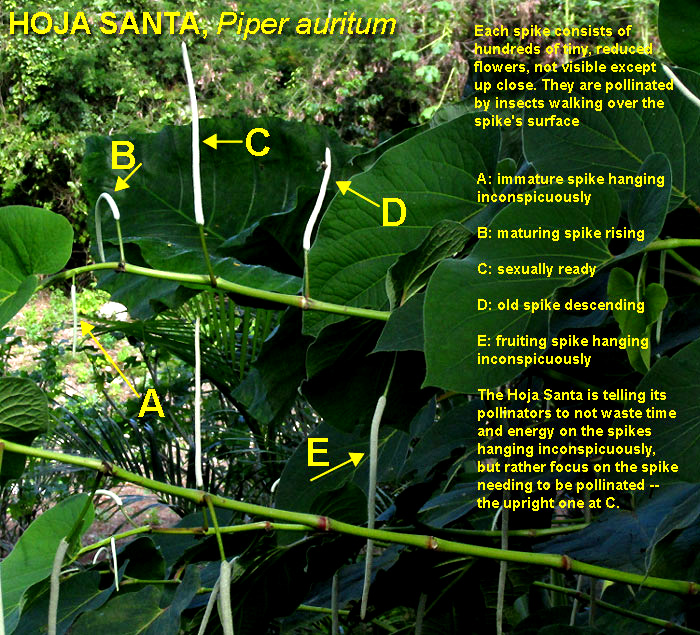Excerpts from Jim Conrad's
Naturalist Newsletter
from the March 17, 2008 Newsletter issued from Mexico's Southernmost State, CHIAPAS
HOJA SANTA
Members of the genus Piper are slender bushes or small trees of the Piper Family, in which the popular house-plants known as Peperomias are found. Pipers are easy to recognize because of their slender spikes of very tiny, crammed-together, much-reduced flowers, as demonstrated by our most common Piper, Piper auritum, below:

Piper auritum's crushed leaves emit a pungent, sarsaparilla-like odor. When I worked at the Missouri Botanical Garden in St. Louis back in the 1970s I studied Panamanian Pipers. My work cubical used to be the most fragrant of all at the institution, and no Piper was more spicy-smelling than Piper auritum. Here people often cook their tamales wrapped in Piper auritum's leaves so that the leaves' spicy taste is imparted to the tamales. Piper auritum is often called Hoja Santa here, or "Blessed Leaf."
When Piper auritum's small, greenish spikes of immature flowers first emerge, often they hang down, as in the picture. When flowers in the spikes are mature, the much larger, vividly white spikes are held erect. When the spikes bear maturing fruits, they are once again bent downward. This is another instance of a plant causing its flowers needing to be pollinated to be more attention-getting to visiting pollinators than its immature or already-pollinated flowers.
from the January 10, 2016 Newsletter issued from Hacienda Chichen Resort beside Chichén Itzá Ruins, central Yucatán, MÉXICO
HOJA SANTA SIGNALING ITS POLLINATORS
Below is a diagram accompanying an essay I write about it in today's Newsletter, called Eric's Laugh.
